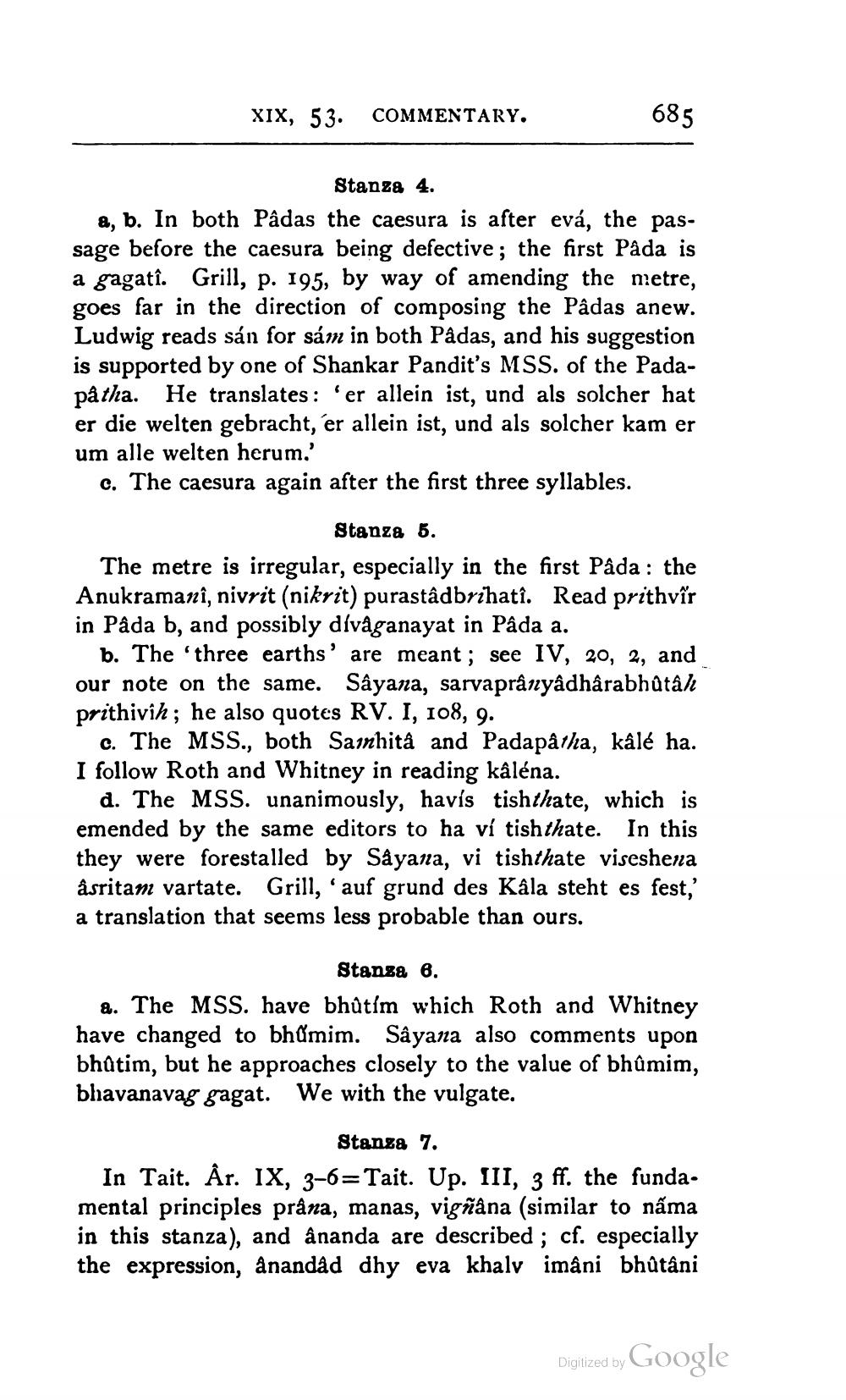________________
XIX, 53. COMMENTARY.
685
Stanza 4. a, b. In both Pâdas the caesura is after evá, the passage before the caesura being defective; the first Pâda is a gagatî. Grill, p. 195, by way of amending the metre, goes far in the direction of composing the Pâdas anew. Ludwig reads sán for sám in both Padas, and his suggestion is supported by one of Shankar Pandit's MSS. of the Padapåtha. He translates: 'er allein ist, und als solcher hat er die welten gebracht, er allein ist, und als solcher kam er um alle welten herum.'
c. The caesura again after the first three syllables.
Stanza 6. The metre is irregular, especially in the first Påda : the Anukramanî, nivrit (nikrit) purastâdbrihatî. Read prithvir in Pâda b, and possibly divåganayat in Pâda a.
b. The 'three earths' are meant; see IV, 20, 2, and our note on the same. Sâyana, sarvaprânyâdhârabhůtah prithivih; he also quotes RV. I, 108, 9.
c. The MSS., both Sanhita and Padapatha, kâlé ha. I follow Roth and Whitney in reading kâléna.
d. The MSS. unanimously, havís tishthate, which is emended by the same editors to ha ví tish thate. In this they were forestalled by Såyana, vi tishthate viseshena åsritam vartate. Grill, auf grund des Käla steht es fest,' a translation that seems less probable than ours.
Stansa 6. a. The MSS. have bhutím which Roth and Whitney have changed to bhůmim. Sâyana also comments upon bhùtim, but he approaches closely to the value of bhûmim, bhavanavag gagat. We with the vulgate.
Stanza 7. In Tait. År. IX, 3-6=Tait. Up. III, 3 ff. the funda. mental principles prâna, manas, vigñana (similar to nấma in this stanza), and ananda are described ; cf. especially the expression, anandåd dhy eva khalv imâni bhûtâni
gtone
Digized by Google




